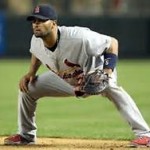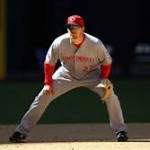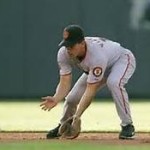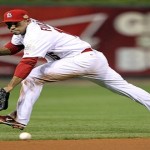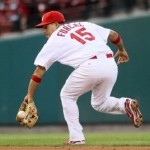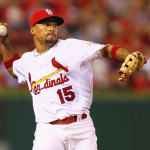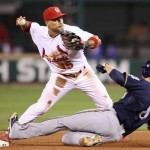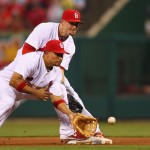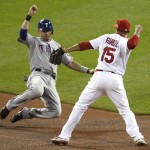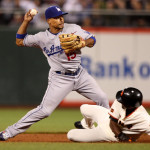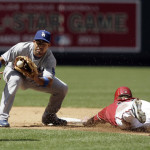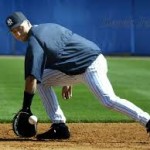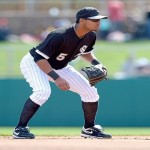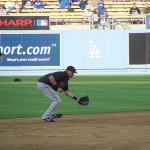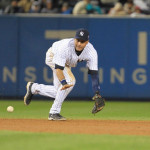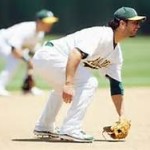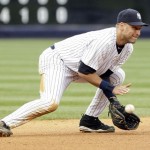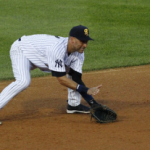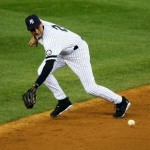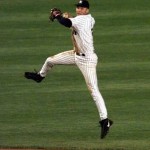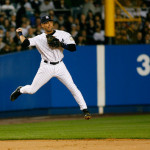The Game of Baseball is the ultimate in sports activity! To all participants, players or fans, its unique simplicity conveys a human drama, and then reveals and resolves the contrasting complexities that would elicit trauma from life’s uncertain circumstances.“Could mere human contrivance order such preciseness, from the tri-hedral dimensions of the field of play, to the definitive specifications and range of intricate function for the designated participants?” – Socrates (from Plato and Socrates: Baseball’s Wisest Fans – by John F. Paciorek)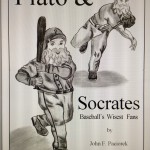

In Baseball the singular concepts of individual and collective (team) excellence are intertwined masterfully. And the team that embodies such synergistic essence and complies with the highest standard of personal and collective excellence produces a “Championship” quality. The proficiency of each player on offense and on defense will determine his individual worth. And the excellence towards which he strives for himself and his team will endear him to his mates and adoring fans. As each player accomplishes his own mastery, the team itself should be beneficiary to the product of a collectively successful enterprise. And each player should also become beneficiary to the collective worth of the team.
The genius of Baseball is in its ability to promote individual excellence while cultivating the collective aspiration to a noble goal. This dual purpose can only be applauded for enhancing the prospect of continuous, enthusiastic hope by all participants, both active and vicarious. Every individual player is innately humbled by an awareness that his own vain and tenacious effort for personal glory pales in comparison to the satisfaction of attaining the triumphal exhilaration of a “Team” victory.
When the team wins, against an overwhelming performance of an opposing pitcher, the “prickly” sensation of a batter’s hitless night somehow doesn’t seem so abrasive. And conversely, the magnificent individual effort of one man (pitcher, in this instance) gives no solace to the individual or his team if the greater goal of victory was not forthcoming.
In Baseball, the adage, “one for all, and all for one” rings true in the hearts and minds of these “9-25 Musketeers,” with their collectively idealistic sense of purpose. It would be difficult to exalt any particular fielding or batting position above another, in rank or prestige, for it is incumbent upon each to perform suitably as various game circumstances present themselves. A quote from A Course in Miracles reads as follows: “If different abilities are applied long enough to one goal the abilities themselves become unified, and a unified goal is accomplished.” The essence of metaphysically inspired thought would more than imply that “the Whole (Oneness) is greater than the sum of individual parts.”
In an earlier essay the author denoted those categories in which there are noticeable differences in abilities: Batting and Pitching. What is it that would determine the highest level of consistent proficiency for which every player and team would certainly aspire to attain?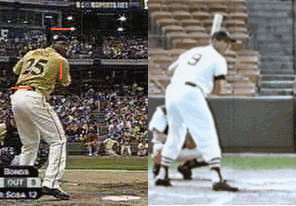
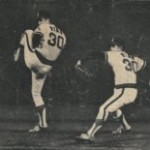
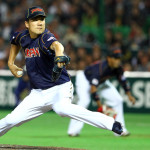
Ted Williams said it best for all of us who have ever played the game of Baseball, as well as participated in other forms of athletics, “hitting a baseball is the single-most difficult thing to do in all of sports.” No other individual sport-skill encompasses the variety of challenging variables that a batter has to “put in order” to be a proficient “hitter.” It takes physical strength, flexibility, quickness, and timing, as well as the mental attributes of courage, confidence, determination, fortitude, for even the least skilled professional to “stand-in” against a 95 M.P.H. fastball, 85+slider, and a variety of “off-speed” multiples.
Now, to become a consistently outstanding hitter, an individual must develop all the aforementioned characteristics, as well as ascribe to a technique of proper mechanics which facilitates the most probable means of making solid contact with a pitched baseball. And, of course solid contact would have to involve more than just striking the ball squarely with the bat! A player could hit the ball squarely off the bat, and merely hit a bouncing ball or even a hard ground ball to an infielder for a sure out. And sometimes he could hit a ball squarely, and launch a towering “pop-up,” or “hook” a wicked foul-ball.
However, the “consistently-good” hitter” is not merely one who makes solid contact with the ball. But rather, he is a batter whose body mechanics facilitate the action of the swinging bat to contact and continue through the ball at an angle that provides for a straight (non-hooking or slicing) and ascending “line-drive.” The “Art” of hitting a baseball could certainly be defined in the context of describing the ideal hitter– “He is one whose bat most consistently contacts and drives through the ball in a manner that facilitates a straight and ascending “line-drive.”(To hit the ball in any other manner would be to miss-hit it.)
Just hitting the pitched ball is not that difficult to do; hitting it with authority is what is difficult! Because of the myriad challenges a batter has to surmount while encountering the diminutive, ballistic (and frequently volatile), compressed, spherical projectile, most dispassionate and well-rounded athletes would agree that making solid and forceful contact with a bat to a pitched ball takes extraordinary, and nearly uncanny, skill.
The best hitters in Baseball either consciously, or unconsciously, ascribed to sound basics principles in their batting application. But even they should aspire to diminish the substandard quotient for presumable batting excellence, by eliminating those margins for error which plague every erstwhile (but ignorant) proponent for exceeding the 40percentile range of batting efficiency.
Two basic ideas have to be present in the thought of every batter as he contemplates the proper batting technique. First, he must fully realize the fact that every pitch is moving in a downward trajectory. 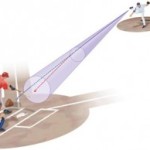 An intelligent approach to the ball would obviously have to incorporate body movement that would facilitate the flight action of the bat to be one in a slightly upward direction as it is contacting the ball on a line as close to 180 degrees as possible.
An intelligent approach to the ball would obviously have to incorporate body movement that would facilitate the flight action of the bat to be one in a slightly upward direction as it is contacting the ball on a line as close to 180 degrees as possible. 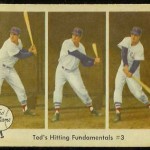
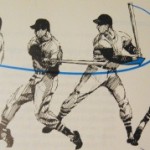
Second, optimal viewing of the pitched baseball is achieved when the batter’s head is still, and eyes remain as close as possible to a parallel level of the ball, as the swing is taking place. Since it is impossible for the batter’s eyes to be at the exact level of any pitch within the strike zone, maintaining a low stance not only provides a batter with a more advantageous accommodation for the umpire’s strike-zone, but also affords him an optimal viewing angle from which to more accurately detect the nuances (speed and direction) of the incoming ball.
There are three basic components to the practical application of the principle of effective batting: (1) Balance and Stability of Stance; (2) Security for undisturbed visual acuity; (3) Self-contained Power source.
A low center of gravity can be established by spreading the feet to the length of one’s normal stride, and bending the knees as low as can accommodate comfort and quickness. This strong base affords the batter the fastest possible reaction time for a twisting body to respond to any variation of pitched balls. One of the most prominent features of a low stance is the obvious advantage the batter has with the establishment of a smaller strike zone.
With the low-wide stance, the batter is in an “ultra-stationary” position, from which to view the pitched ball with a minimum of distortion. As a tennis player receiving serve, a catcher receiving a pitch, a shortstop receiving a throw from catcher, and a first baseman receiving low throws from infielders are bent over and down as low as they can, to see the speeding ball on as close to a parallel level to the eyes as possible, so the batter, in a low stance, views the pitched ball with most clarity.
Although Mr. Williams was nearly perfect in his understanding and application of the principles governing the absolute definition of batting prominence, he was not altogether unflawed in his actual approach to an impeccable demonstration. The closest exponent of the perfect batting technique was Barry Bonds, who, in obvious ways, superseded the brilliance that Ted Williams embodied.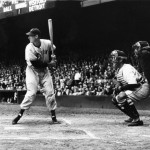
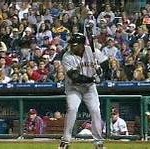
Barry Bonds was capable of hitting 100 home runs and batting .400 or more, because he was closer to flawless technique than anyone who has ever played the game. His strength was incontestable, his athletic ability was indisputable, his timing was nearly impeccable, and his stance, approach to the ball, and fluid mechanics were incomparable.
In the few areas in which Ted Williams appeared lacking, Mr. Bonds was pronouncedly adept (especially in his adaptability to strike at the low pitch, and hitting the ball with power to the opposite field).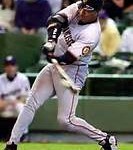
What was it that Barry Bonds did consistently right, that most, if not all, other batters do only sporadically? The answer is 5 separate things. They are the following:
- He established a strong low center of gravity while waiting for the ball.
- He greatly diminished the movement of his head and eyes.
- He waited patiently for the ball to get to him while he quietly lowered his hands to begin an unobtrusive rhythm of his arms.
- When the ball got to his hitting zone, 4 things happened simultaneously:a. The front foot planted quickly and firmly—front leg straightened.
b. Front shoulder shrugged upward, while back shoulder and elbow drove downward (hands, while staying behind back shoulder, present a flat bat as the body was turning to address the pitched ball).
c. Back bent knee drove forward and down, as hips turned rapidly.
d. The shoulders followed the hips in rapid succession with arms extending through the contact of the ball.
- From contact, through the straightening of arms, through the follow through, the shoulders were continuously flowing, until they (shoulders) had changed position (back to front and vice-versa).


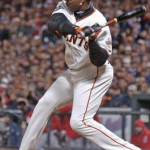
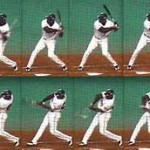

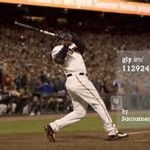
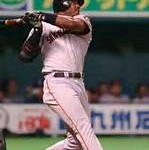
If ever there was an “ideal” to emulate, as advised by Aristotle’s Nichomachian Ethics, and to form a generic “designation” for a universal application for batting a baseball, it would have to be Barry Bonds. Consistency of batting effectiveness (efficiency in striking a baseball) had never been more highly demonstrated than by Barry Bonds, in the 2001season, as well as in 2002—2004. Throughout his Major League career, accolades were heaped upon him for what seemed like a remarkable consistency for slugging the ball better than anyone else, at least in the 1990s.
It was neither strength, nor natural ability, which allowed Barry to stand out as the greatest exponent of Batting Excellence the Baseball World had ever seen. It was his masterful application of the basic fundamentals of Principle that afforded him the facility to near impeccable demonstration. He was the only hitter who came to the plate, and looked as though he should get a hit every time he swung the bat. I’m sure that even Shakespeare would exclaim,  “O thou, Faithful Consistency, but by any other name, thou art Barry Bonds.” – And Einstein would concur!
“O thou, Faithful Consistency, but by any other name, thou art Barry Bonds.” – And Einstein would concur!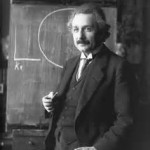
Aristotle pointed out, that, “in order to begin a study of anything that would lead to the highest understanding and demonstration of its universal verity, one must behold an example of a closest facsimile to the ideal estate, study its admirable characteristics, and extrapolate from its obvious functional proficiency a common entity by which a generic standard could be discerned, duplicated, and possibly expanded upon. Excellence in any field of human endeavor is achievable to anyone willing to devote a ‘heart and soul’ effort toward mastering the definable concomitants to successful enterprise.”
All that, having been said, perhaps to enhance Aristotle’s injunction as to a generic standard of visible perfection, the Bible’s encryption would elevate the essence a little more: “Mark the perfect man and behold the upright, for the end of that man is Peace.”
The lack of collective commitment, in order to serve personal aggrandizement, usually renders the highest universal achievement unaffordable. A complete success would have to entail the fruition of the whole. One who would be a true leader of a team is he whose exemplary physical and mental composition complies with the exact nature of “team spirit.” He would be the embodiment of those qualities that would inspire others to appreciate the intrinsic need for compatibility and cooperation, in order to achieve a collective goal.
Barry Bonds definitely had the personal attributes (as did Alexander the Great) to inspire his teammates to their highest collective glory! And he also appeared to have certain characteristics that would have inspired others to emulate his greatness. But, in order for him to have realized his ultimate goal of capturing the World Series Crown, he would have had to thoroughly understand that each member of his team was as integral a part of that fabric of unity as he was. The tension of the finely knitted team fabric must not exceed the delicate bounds of generously enthusiastic applause and constructive criticism within a framework of genuinely compassionate camaraderie.
Any team, on which there is the preeminent presence of such a figure as Barry Bonds, is an automatic contender, and “front-runner,” for winning the World Series, as long as such a “figure-head” fulfills his multi-inspirational role of “leader.” Anything short of full commitment on his part would diminish the team’s chances for ultimate accomplishment.
The Crown was already on Barry’s shoulders! It’s too bad that the catalyst for Maximum Success didn’t rest comfortably within the intelligence, courage, and personal fortitude that should have been encased between his crown and shoulders.
If the 2002 San Francisco Giants Team had 7 or 8 other batters who could hit like Barry Bonds, maybe there would not have been a need for a substantive “bonding” element to unify them into a cohesive band of “patriotic warriors.” 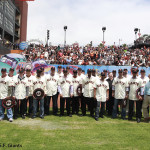 But “they” didn’t, and suffered the consequence. The L. A. Angels, on the other hand, was a team comprised of good but not outstanding players, and no individual equal to the premier status of Barry Bonds.
But “they” didn’t, and suffered the consequence. The L. A. Angels, on the other hand, was a team comprised of good but not outstanding players, and no individual equal to the premier status of Barry Bonds. 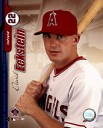 Yet, an intangible element of cohesiveness attended to their every fortuitous circumstance, and the “Whole” of their teamwork was proven greater than the sum of their individual parts – IT became the 2002 World Series Champion.
Yet, an intangible element of cohesiveness attended to their every fortuitous circumstance, and the “Whole” of their teamwork was proven greater than the sum of their individual parts – IT became the 2002 World Series Champion.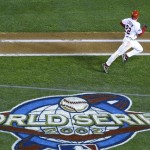
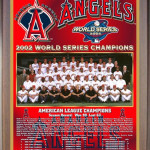
Applying Aristotle’s Principle to Pitching, Nolan Ryan would be the “exemplar” for all prospective “mounds-men” to copy. 
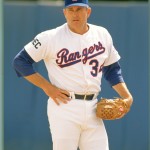 He is Baseball’s greatest pitcher because of all the records he set and his ability to stay healthy for so many years in order to set those records. His blazing fastball, “off-the-table” curveball, debilitating change-up (in his advanced years), his “tactical” control and his competitive spirit were the defining attributes of his incomparable mounds-man-ship.
He is Baseball’s greatest pitcher because of all the records he set and his ability to stay healthy for so many years in order to set those records. His blazing fastball, “off-the-table” curveball, debilitating change-up (in his advanced years), his “tactical” control and his competitive spirit were the defining attributes of his incomparable mounds-man-ship.
Nolan Ryan is at the top of list of outstanding pitchers in Baseball history because he either consciously or unconsciously fine-tuned his pitching mechanics to a point near-to-perfection better than any other pitcher (past or present). It was the ultimate use of proper “mechanics” that not only fostered the most economically sound use of his body to control and propel the baseball with maximum intent, but also secured an unusually long career.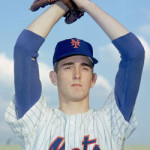
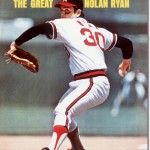
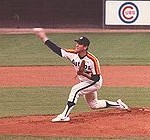
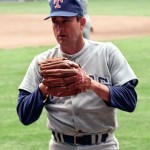
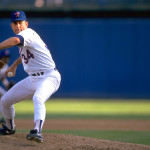
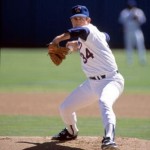
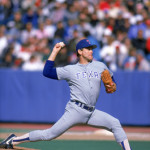
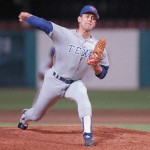
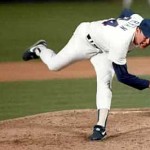
There were some Major League pitchers who were bigger and stronger than Nolan Ryan, and some of them threw harder than he did. 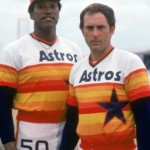 But there are very few who have had the mechanical potential to experience his longevity and injury-less accommodation. Curt Schilling, and Randy Johnson (who was tutored somewhat by Ryan) had the best chances to “survive and achieve.”
But there are very few who have had the mechanical potential to experience his longevity and injury-less accommodation. Curt Schilling, and Randy Johnson (who was tutored somewhat by Ryan) had the best chances to “survive and achieve.” 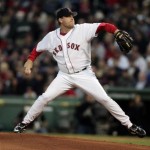
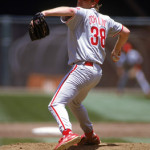

 The common denominator for all three of these masterful mounds-men is the simple fact that none of them straightens his pitching-arm as he begins and continues the action through the course of his delivery until after the forward momentum of the turning backside of the body catapults the shoulder, bent-arm and ball toward the plate. At that point, the arm begins a straightening process that quickly and briefly extends it forward with the follow-through.
The common denominator for all three of these masterful mounds-men is the simple fact that none of them straightens his pitching-arm as he begins and continues the action through the course of his delivery until after the forward momentum of the turning backside of the body catapults the shoulder, bent-arm and ball toward the plate. At that point, the arm begins a straightening process that quickly and briefly extends it forward with the follow-through.
The leverage that the bent arm provides diminishes the weight imposed on the shoulder and elbow, thus fortifying their strength to implement function with speed, control and optimal force. The lighter the weight, the faster the shoulder will rotate, and the faster and more accurately controlled will be the ball as it leaves the hand of the pitcher whose total body mechanics are intact.
If every pitcher would study the scientific principle most suited to applying the proper mechanics for pitching, there would be less injuries and more effective performances in an already highly esteemed and formidable profession of Big League Hurlers.
Maximum efficiency for a pitcher includes the following components: 1) Maximum velocity (95 to 100MPH); 2) Deceptive Change-up; 3) Fast breaking Pitch; 4) Impeccable control (strikes, but avoiding the center of the plate); 5) Endurance (100 to 140 pitches- 7-9 innings); 6) Longevity (injury-less-enabling 15 to 20 years of peak performance); 7) Base-stealing deterrent (quick move to plate – no wasteful motion). Even Nolan Ryan did not possess the last attribute, but he could have.
All of the preceding components can be easily attributable to every single, able-bodied Big League pitcher of the modern era, if each would first subscribe to one critical facet of a primary pitching principle that differentiated “Nolie” from every other pitcher. The axiom would read as follows: “the farther the ball moves away from the body, as the arm is preparing to deliver the pitch, the heavier the weight will be to the stress and strain of the elbow, shoulder and torso” (not to mention “to the speed” of the throwing action).
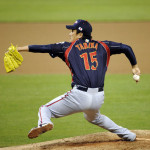
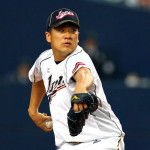
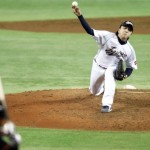
All seemingly conflicting forces predicate their individual successes on separate and independent interests. There is a “single” entity, whose ultimate and universal pursuit of “excellence,” could/would incorporate all the separate and distinct facets of “Being” into a legitimate and recognizable configuration of “sameness,” and ameliorate all sense of contradiction and conflict! Only the unadulterated essence of “Spirit” and Its own universal application of “goodness” has the inherent capacity for lawful exercise of Truth in a world seeking solutions of/with/for peace.
The ultimate goal of a “great” Team would be to establish a realistic sense of “Sameness,” the spiritual essence of which proves the “Truth of Harmony’s Perfect Oneness. In Spirit we are all the same; the differences in form should be insignificant because they conceal the sameness of content that is found in everyone’s mind.
In what could be considered the “present sense” of things, some individuals seem advanced beyond their teammates, therefore putting themselves in the more noticeable positions of prominence in regard to garnering the more “prestigious” assignments in the field (as well as batting). But those players currently mired in the mediocre stages of development, if faithful (as a “mustard-seed”) to the course of action that soundly promotes a genuine enhancement of technique, will soon supersede their present ineptness with graduating states of comprehensible prowess.
Infinite Patience of an Absolute Faith will produce the “immediate effect” of what Einstein would have wanted to realize in his own goal for his “unified field theory.” But his “short-sighted- finite perception-in-matter” couldn’t establish the “insightful” true perception that reveals what the “miracle” displays by means of “mindful-forgiveness.”
To envision for yourself all the attributes of a “big-league” player, even though those traits are not yet evident to “outside” observation, and arduously but hopefully to put forth a “heart and soul” effort to fulfill the destiny of your inner reality with “perfect-practice,” you cannot but raise yourself to new and greater heights of glory. There is no end to what the mind can imagine.
Even Einstein exclaimed, “Imagination is more powerful than Knowledge,” for he knew there was a major difference between the “dream” and one who lives his dream. So put your mind to “Good-use” and see your true potential, and realize its fulfillment. Don’t be merely a “forgetful hearer,” but a “doer” of the Principle – “law of liberty.”
Beyond strength and natural ability, “mechanics” is the most crucial aspect for all the “field-designations” within the singular Field of Baseball ( It is mechanical correctness that determines maximum proficiency for batting, throwing (including Pitching), fielding, as well as running – to attain one’s own best level).
Mechanical understanding of how one’s body can be manipulated to exact the maximum force necessary to control the batting, throwing, and fielding of the baseball with optimum efficiency and power should be foremost in the mind of any player desiring to achieve his own best effort. And there are aspects of running that take into account the mechanical advantage that understanding and application foster for those who would improve speed and agility.
Anyone wanting to be the best he can be in any or all things he participates, must first find out the “principle” which facilitates the surest, quickest, and easiest way to function properly in the enterprise. To seek first the kingdom of Goodness is to apply the “Absolute Principle” at the foundational level upon which all other general principles metaphysically connect. But, a building is only as strong as its weakest link.
If your building is not as strong as you want it to be, then find its weak link. It is your right to experience maximum success. Don’t, for an instant, settle for anything other than perfection. But expect the highest results of achievement as you go through the process “most” reasonably adaptable to the “Absolute Principle.”
Coming Soon: Major-League Batting Crisis? – 2014
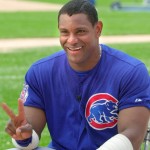 , but it is a good bet that both McGwire and Bonds would have become Baseball “Legends” under the auspices of their own physical and mental accoutrements. McGwire hit 49 Home Runs in the first Major-League season, with a body, while sturdy and powerful, far less muscularly ostentatious than “Ozark IKE” or “Lil’ ABNER”.
, but it is a good bet that both McGwire and Bonds would have become Baseball “Legends” under the auspices of their own physical and mental accoutrements. McGwire hit 49 Home Runs in the first Major-League season, with a body, while sturdy and powerful, far less muscularly ostentatious than “Ozark IKE” or “Lil’ ABNER”. 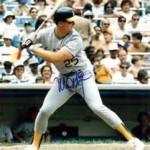 And Bonds, during the 1990s, and weighing in at 185 lbs,
And Bonds, during the 1990s, and weighing in at 185 lbs,
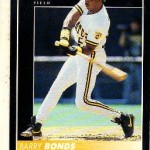
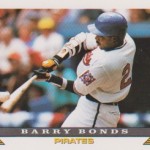 was the most prolific hitter in Baseball. And at the times that it is presumed each began taking steroids, they each incurred numerous bouts on the disabled lists while coping with the effects of the somewhat inexact science of artificially enhanced muscle development.
was the most prolific hitter in Baseball. And at the times that it is presumed each began taking steroids, they each incurred numerous bouts on the disabled lists while coping with the effects of the somewhat inexact science of artificially enhanced muscle development.

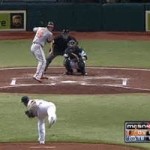 Unfortunately for him, it is too late to see the ball and follow it with exact precision. Barry and Mark, would have been set as the ball was leaving the pitchers’ hand, heads still, while unobtrusively “gathering” the momentum of the body to explode rapidly as the front foot planted firmly into the ground. (Nothing can happen until the front foot is planted, so why have it suspended for any uncertain time.)
Unfortunately for him, it is too late to see the ball and follow it with exact precision. Barry and Mark, would have been set as the ball was leaving the pitchers’ hand, heads still, while unobtrusively “gathering” the momentum of the body to explode rapidly as the front foot planted firmly into the ground. (Nothing can happen until the front foot is planted, so why have it suspended for any uncertain time.) , but avoid the stride completely, he would be more ready for any pitch thrown to him. Then he would simply plant his front foot, and let the rest of his swing occur in its otherwise majestic sequence.
, but avoid the stride completely, he would be more ready for any pitch thrown to him. Then he would simply plant his front foot, and let the rest of his swing occur in its otherwise majestic sequence. 


 With his natural power ( not needing to be steroid enhanced) Chris is the front-runner to legitimately replicate the Bonds’ mystique and carve out a niche in Baseball’s legendary “Hall of Heroes.” But only if he changes his false-impression of “proper hitting technique”!
With his natural power ( not needing to be steroid enhanced) Chris is the front-runner to legitimately replicate the Bonds’ mystique and carve out a niche in Baseball’s legendary “Hall of Heroes.” But only if he changes his false-impression of “proper hitting technique”!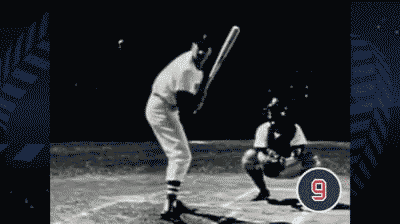 ).
).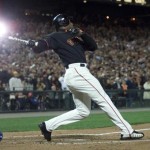
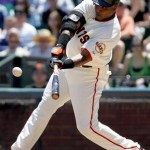
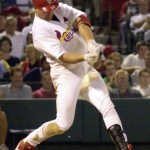
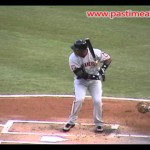
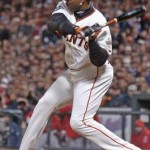
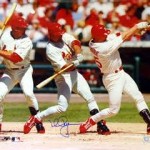
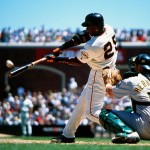
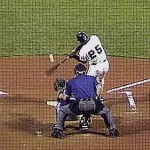
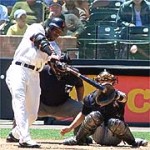

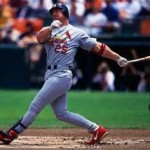
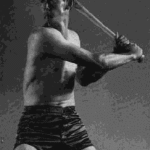 He may even have had his keen eyesight.
He may even have had his keen eyesight.
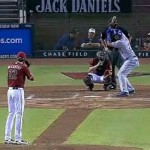

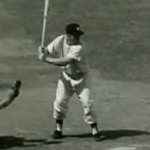
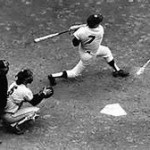
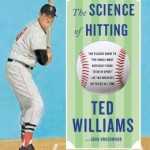
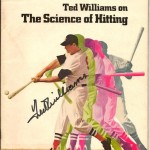

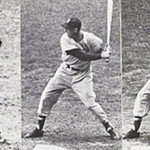
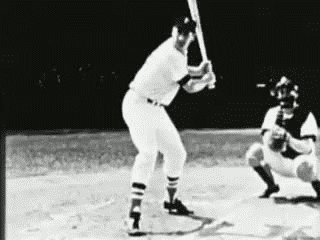
 But more often they do not!
But more often they do not!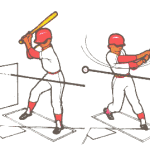


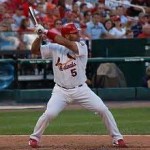
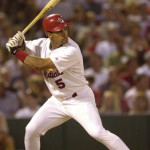
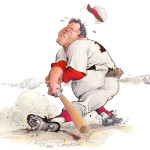

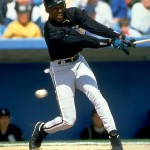

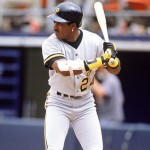 But
But
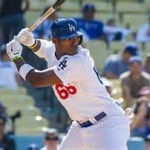
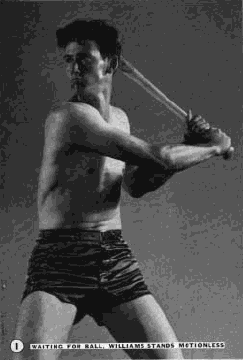
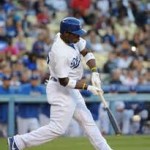 (A batter in a high stance is more apt to swing at low pitches with an exaggerated “perpendicular” slant to his swing while the bat of a batter in a crouch will be more “parallel” to the ground)
(A batter in a high stance is more apt to swing at low pitches with an exaggerated “perpendicular” slant to his swing while the bat of a batter in a crouch will be more “parallel” to the ground)


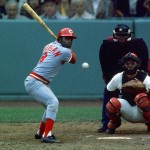 As a tennis player, receiving serve, is bent over and down as low as he can, to see the speeding ball on as close to a parallel level to the eyes as possible, so the batter, in a low stance, views the pitched ball with most clarity.
As a tennis player, receiving serve, is bent over and down as low as he can, to see the speeding ball on as close to a parallel level to the eyes as possible, so the batter, in a low stance, views the pitched ball with most clarity.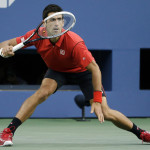
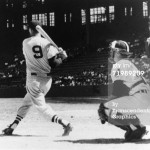












 “O thou, Faithful Consistency, but by any other name, thou art Barry Bonds.” – And Einstein would concur!
“O thou, Faithful Consistency, but by any other name, thou art Barry Bonds.” – And Einstein would concur!

























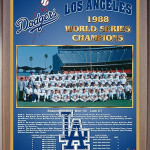

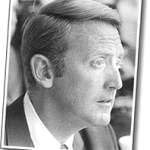
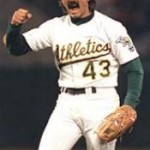


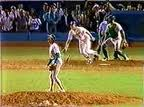
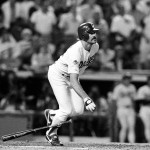
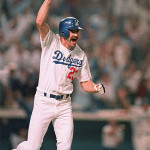
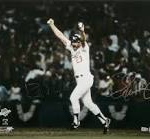
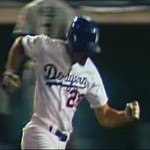 after the subjugated leather-bound projectile did indeed traverse the height of the outfield fence for an uncontested, historic “Tour De Force” of amazing ramifications, the conclusion of which would be directly revealed…
after the subjugated leather-bound projectile did indeed traverse the height of the outfield fence for an uncontested, historic “Tour De Force” of amazing ramifications, the conclusion of which would be directly revealed…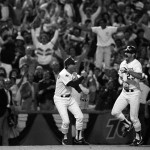
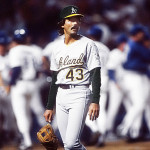
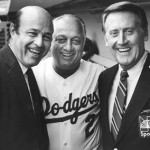
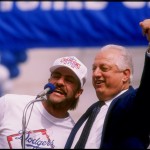
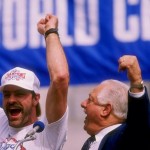
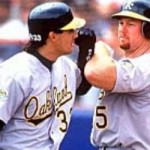
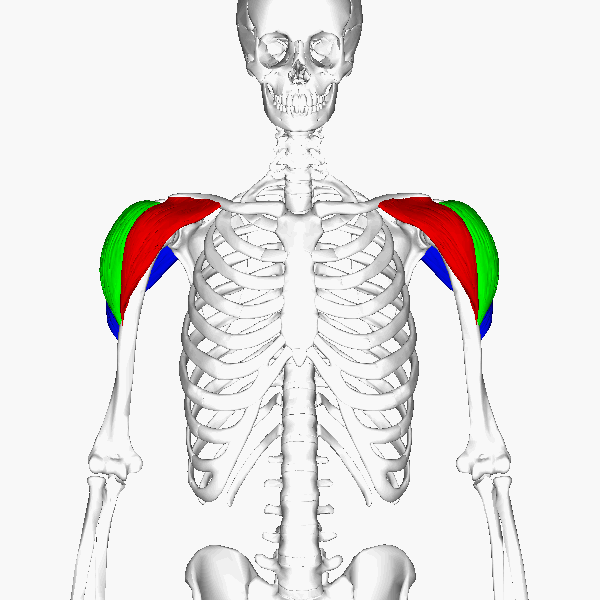


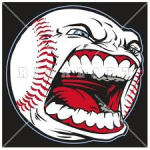
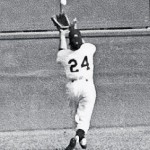
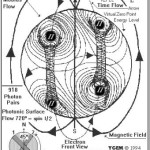
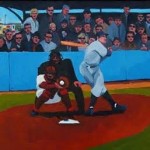
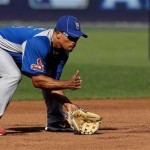
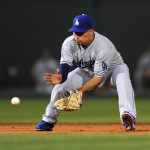
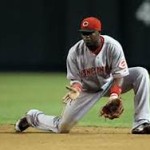

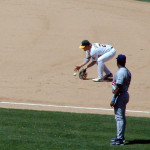
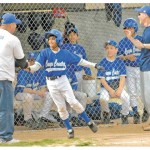
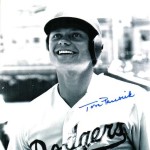
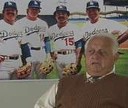
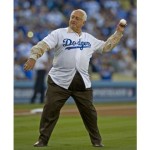


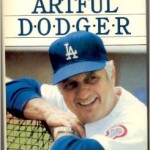

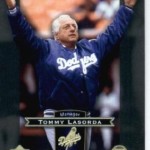
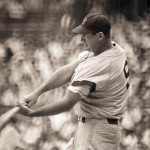
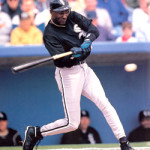
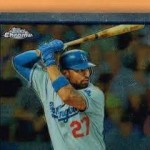
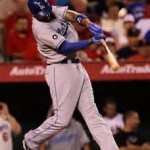
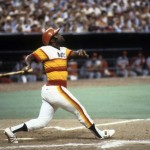
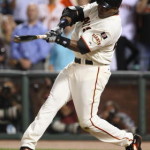

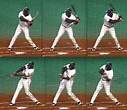



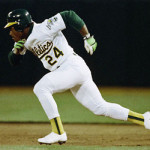
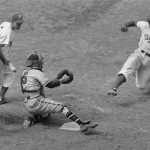
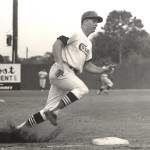
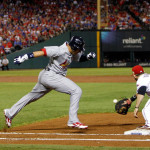 In some situations, when a fielder knows of the intensity of such runners, his thought becomes preoccupied with that aggressiveness and rushes his own actions with a resultant error. (Pete Rose and Bryce Harper are the finest examples to emulate.)
In some situations, when a fielder knows of the intensity of such runners, his thought becomes preoccupied with that aggressiveness and rushes his own actions with a resultant error. (Pete Rose and Bryce Harper are the finest examples to emulate.)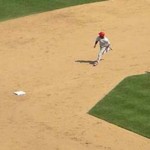
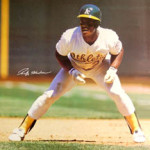
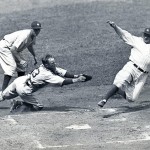
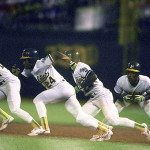
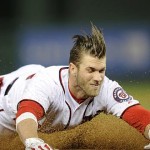
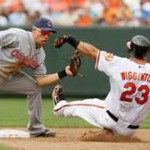 There is debate over whether it is more effective to slide head-first or legs-first. The answer is determined by the position of body as the runner approaches that critical point when the decision is imminent. When a runner gains momentum rapidly, and his upper body is still leaning forward when he reaches the “critical” stage, he is probably in a better anatomical position to slide head first, since it would take too much effort to transition to a lower body thrust for the feet to go first. The extra effort would slow him down.
There is debate over whether it is more effective to slide head-first or legs-first. The answer is determined by the position of body as the runner approaches that critical point when the decision is imminent. When a runner gains momentum rapidly, and his upper body is still leaning forward when he reaches the “critical” stage, he is probably in a better anatomical position to slide head first, since it would take too much effort to transition to a lower body thrust for the feet to go first. The extra effort would slow him down.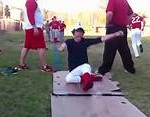
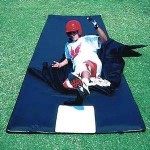
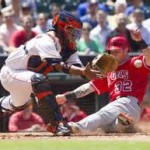 (Ricky Henderson, Lou Brock, and Joe Morgan are the prime examples from whom all ardent students of the Art of Base-running should learn their trade!)
(Ricky Henderson, Lou Brock, and Joe Morgan are the prime examples from whom all ardent students of the Art of Base-running should learn their trade!)